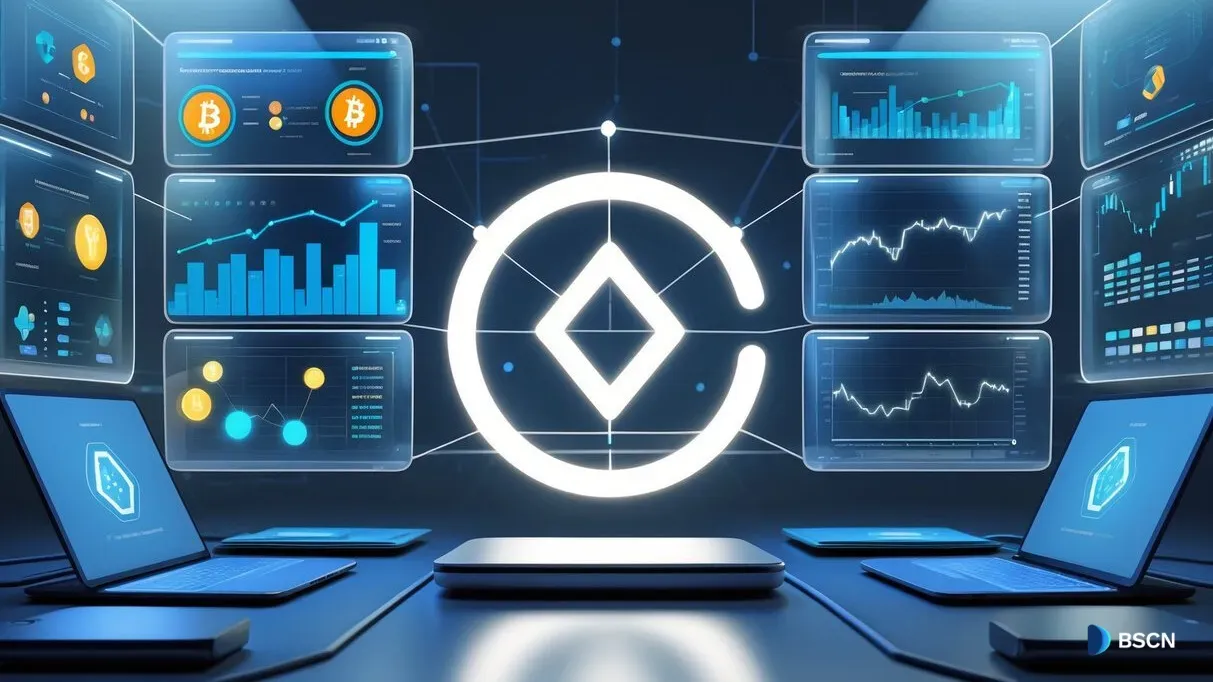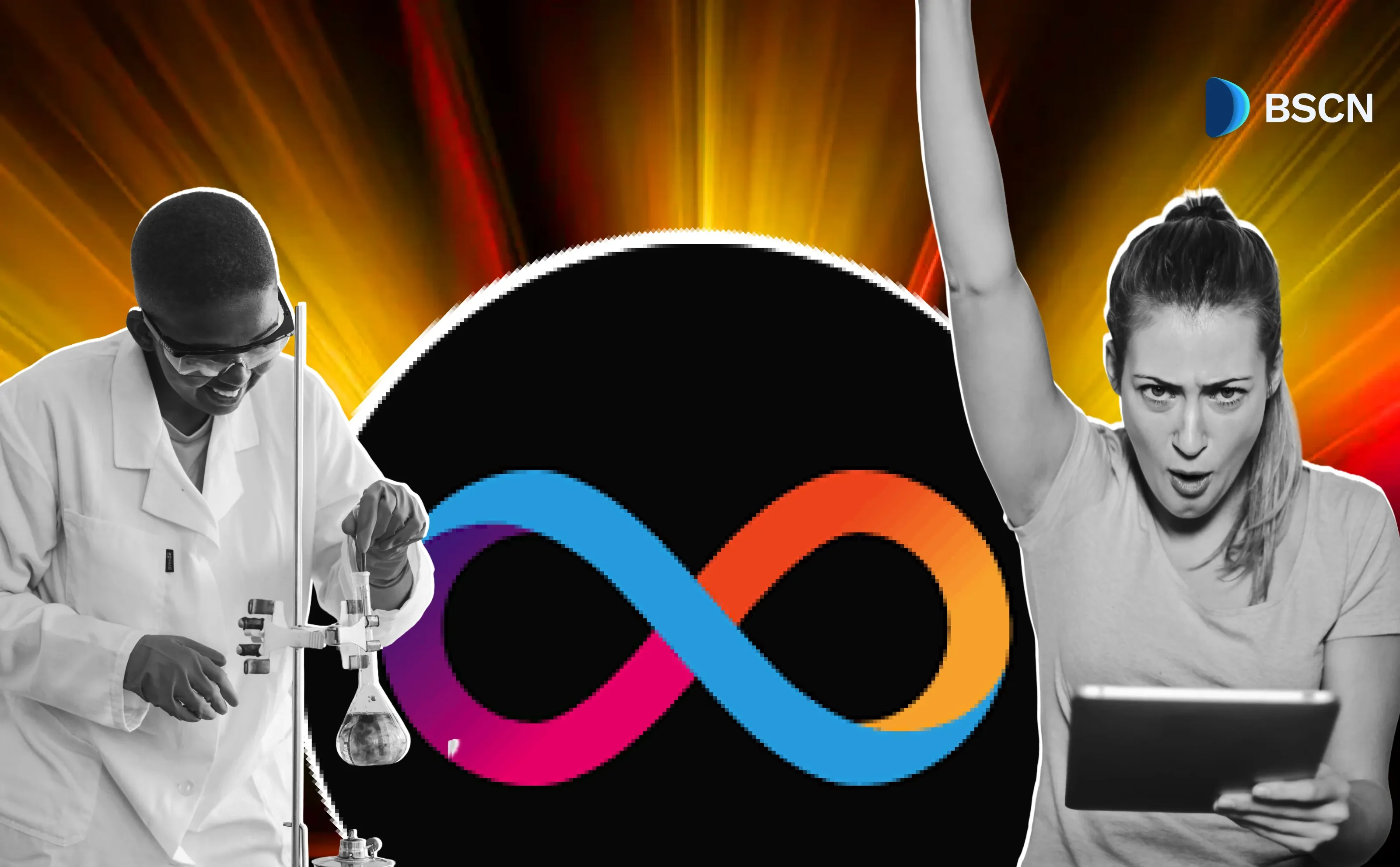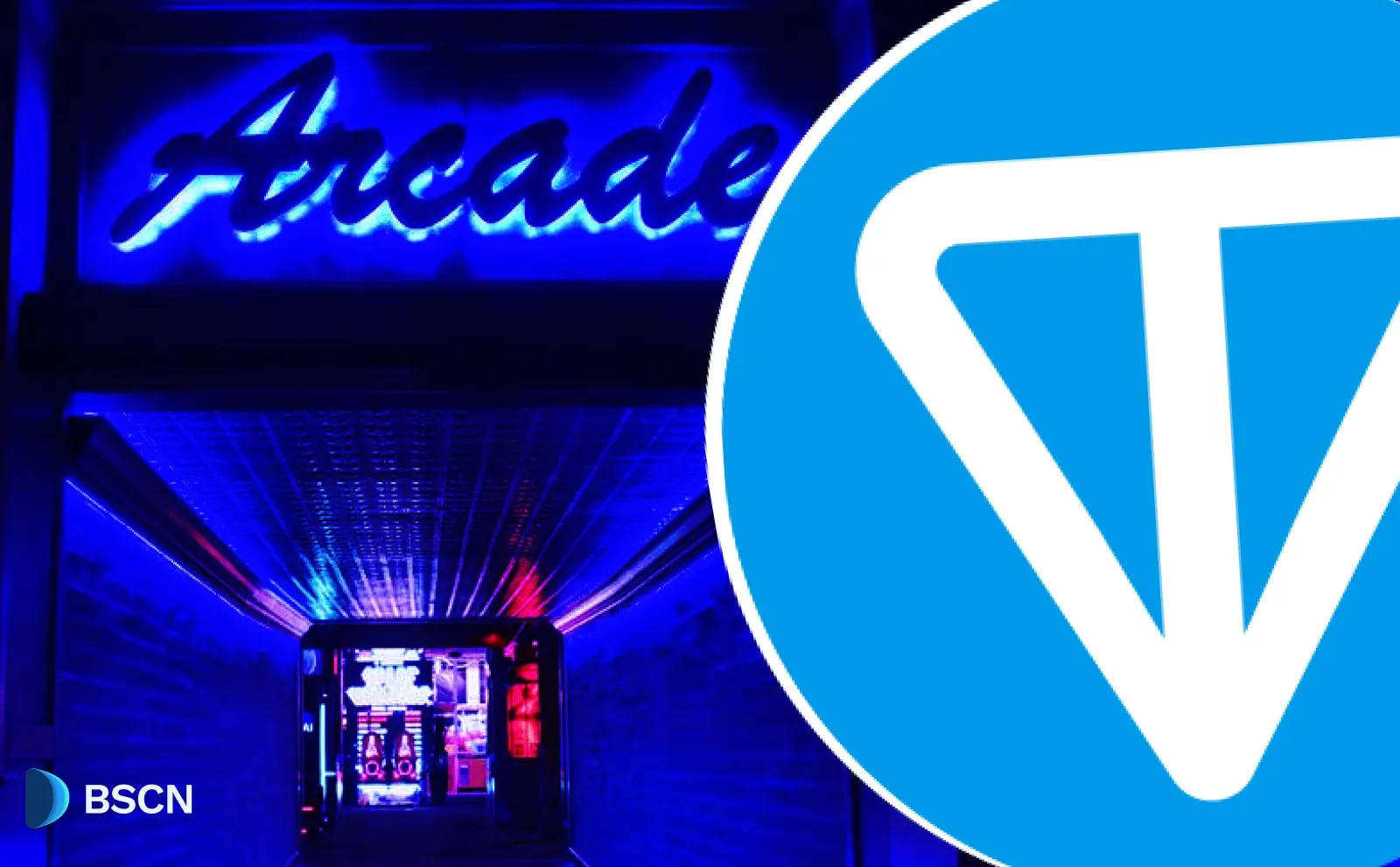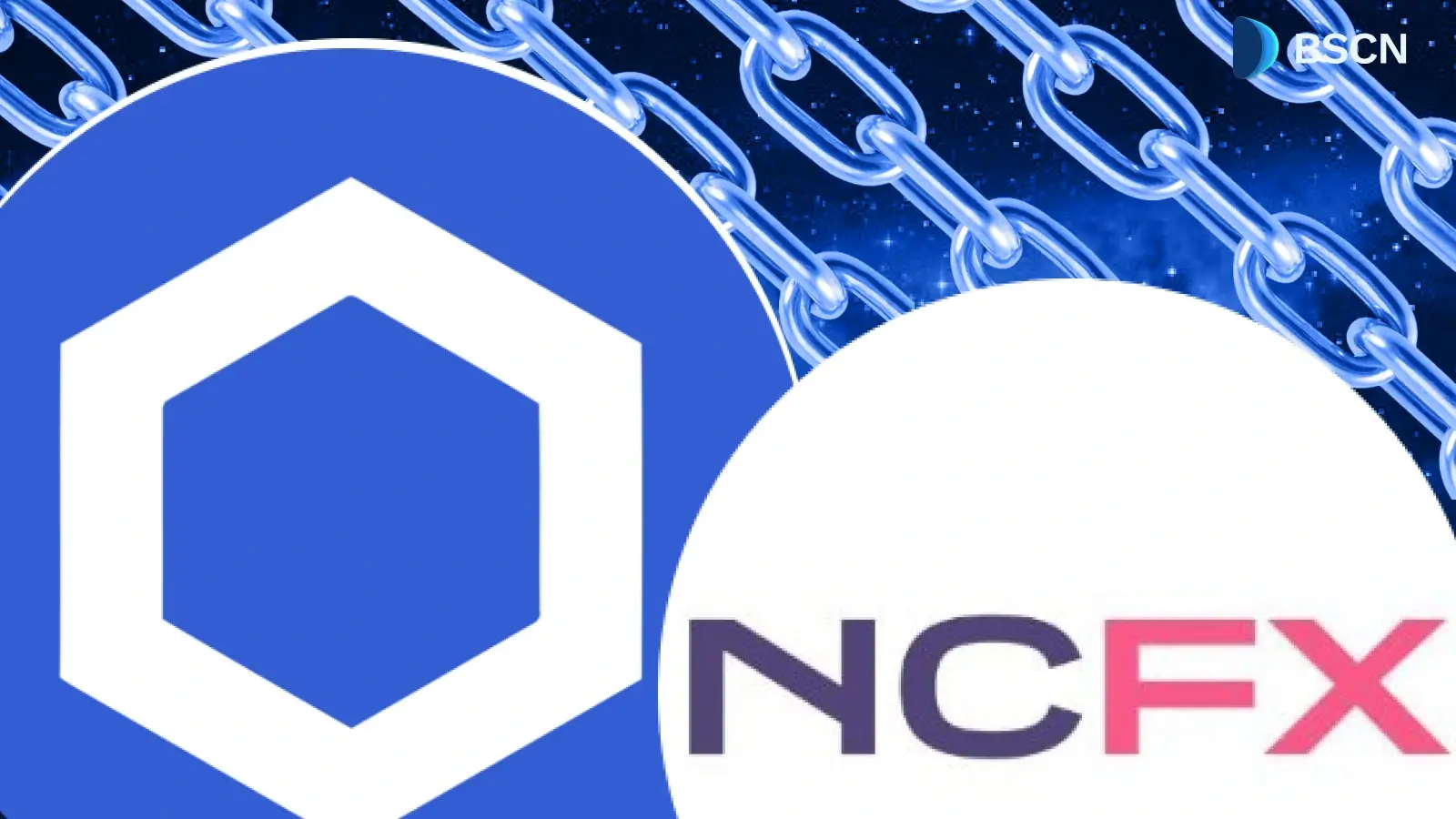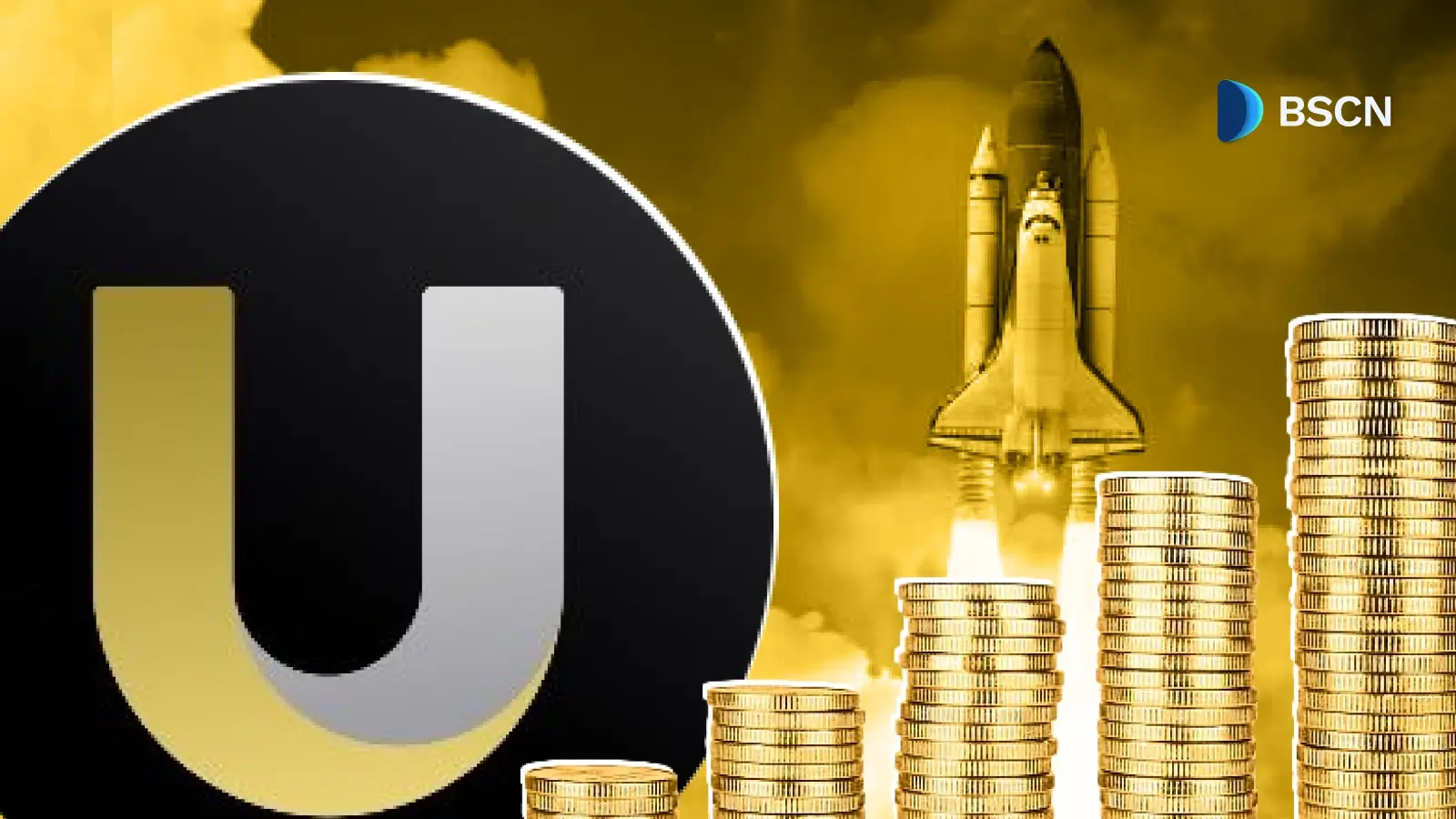Deepdive
(Advertisement)
Solana and the SOL Token: Ultimate Guide
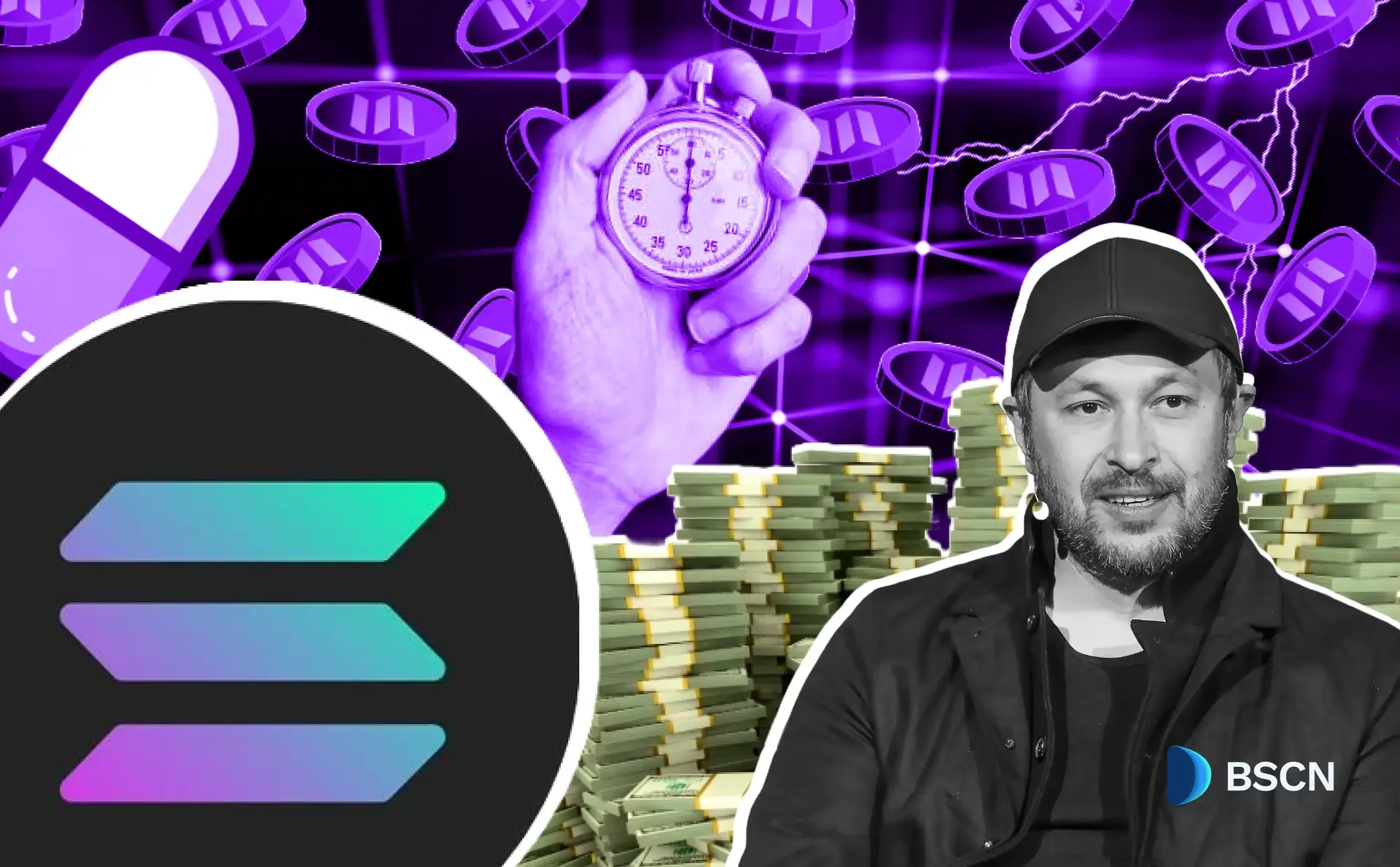
Explore Solana's revolutionary blockchain ecosystem, from its high-performance architecture to NFTs, DeFi, and mobile solutions. Learn how Solana became a leading Layer 1 platform with unmatched scalability and low costs.
Crypto Rich
February 11, 2025
(Advertisement)
Table of Contents
Introduction
Solana has emerged as one of blockchain technology's most transformative platforms, revolutionizing how we think about scalability, speed, and accessibility in the crypto space. This comprehensive analysis delves into Solana's ecosystem, exploring its technological foundations, diverse applications, and the innovation that has positioned it as a leading force in the blockchain industry.
The Genesis of Solana
Solana Labs was founded in 2017 by Anatoly Yakovenko, Raj Gokal, and Greg Fitzgerald. Solana was conceived as a solution to blockchain's persistent scalability challenges. Yakovenko's background at Qualcomm provided crucial insights into high-performance computing, leading to the development of Proof of History (PoH) - Solana's groundbreaking innovation for blockchain time synchronization.
Solana Labs officially launched its mainnet beta in March 2020, marking the beginning of what would become one of crypto's most remarkable success stories. The Solana Foundation, established in Switzerland, has been instrumental in steering the ecosystem's growth through strategic initiatives and development support.
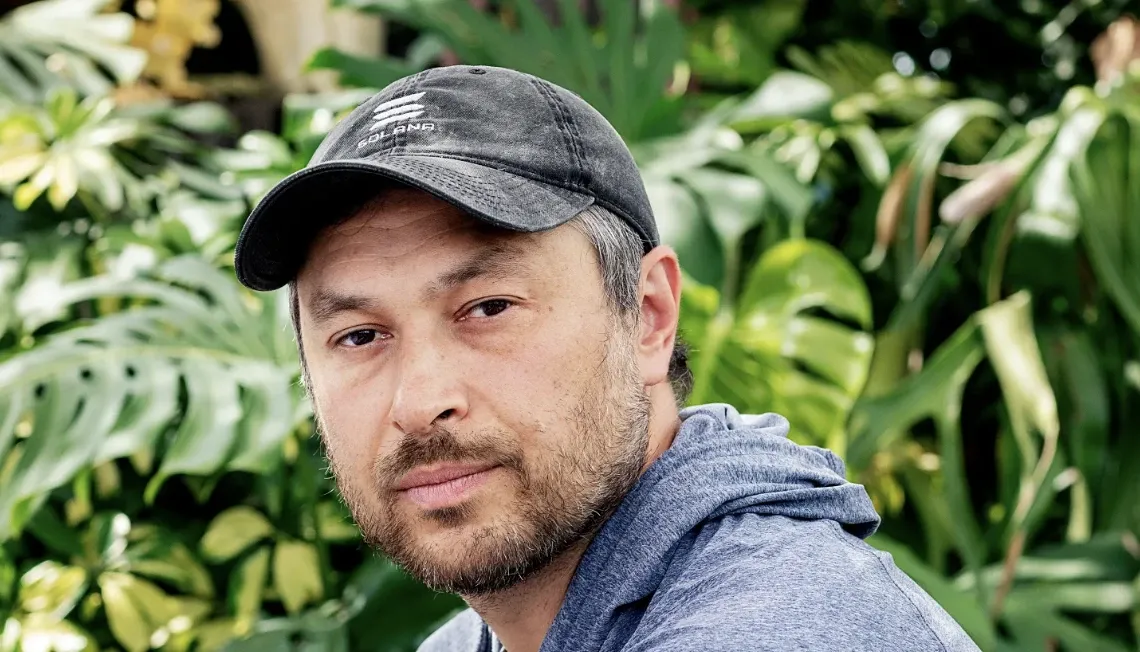
Technical Architecture: Breaking New Ground
Solana's L1 blockchain architecture represents a fundamental breakthrough in distributed systems technology, combining multiple innovative approaches to create an unprecedented level of performance. At its core, the platform utilizes several revolutionary technological components:
- Proof of History (PoH): A groundbreaking approach to time synchronization that creates a cryptographic time stamp for each transaction, enabling massive parallelization and throughput improvements. This innovation allows validators to process transactions independently, dramatically reducing the coordination overhead typically associated with blockchain networks.
- Tower BFT (Byzantine Fault Tolerance): An optimized consensus mechanism that leverages the time data from PoH to achieve agreement across the network with minimal communication overhead. This sophisticated approach enables validators to make decisions with greater confidence and reduced latency.
- Gulf Stream and Turbine: Advanced transaction processing and block propagation protocols that work in concert to enable Solana's remarkable performance. Gulf Stream eliminates the traditional mempool, allowing validators to begin processing transactions before they're even finalized, while Turbine optimizes network communication by breaking data into efficiently manageable chunks.
- Sealevel: A revolutionary parallel transaction processing engine that can simultaneously handle thousands of smart contracts, maximizing CPU utilization and enabling true horizontal scaling across multiple GPU cores and machines.
The Solana Virtual Machine (SVM)
The Solana Virtual Machine (SVM) represents a fundamental departure from the Ethereum Virtual Machine (EVM), embodying a revolutionary approach to blockchain computation. Unlike the EVM's sequential processing model, the SVM is designed for parallel execution, allowing multiple smart contracts to run simultaneously across different cores. This architectural difference enables Solana to achieve unprecedented transaction speeds and significantly lower computational costs.
Smart contract deployment on SVM differs crucially from EVM. While Ethereum uses Solidity as its primary smart contract language, Solana primarily supports Rust, with additional support for C and C++. The SVM's stateless design means that transaction inputs are explicitly defined, allowing for more predictable and efficient contract execution. This approach eliminates the global state complexity found in EVM. Developers can deploy contracts with greater computational efficiency. Solana's architecture allows for more complex logic to be executed at a fraction of the cost compared to traditional EVM-based blockchains.
The FTX Chapter: Impact and Recovery
The history of Solana cannot be fully told without addressing its relationship with FTX and Sam Bankman-Fried (SBF) (Currently serving a 25-year prison sentence for his role in the FTX fraud). During 2020-2022, FTX and Alameda Research became significant players in the Solana ecosystem, with SBF being one of its most vocal supporters. This period saw several key developments:
During the bull market of 2021, SBF's endorsement and FTX's involvement helped catapult Solana into the spotlight. FTX and Alameda Research contributed to Solana's growth through various initiatives:
- Project Serum: The creation of Serum DEX, one of the first major decentralized exchanges on Solana, which introduced an on-chain central limit order book. While initially revolutionary, this project later had to be forked by the community as "OpenBook" following FTX's collapse.
- Institutional Investment: FTX and Alameda participated in multiple funding rounds and ecosystem investments, contributing to Solana's rapid expansion and adoption during this period.
When FTX collapsed in November 2022, Solana faced significant challenges. The token price dropped dramatically, and many questioned the ecosystem's ability to survive without FTX's support. However, this period ultimately demonstrated Solana's resilience:
The ecosystem's response to the FTX crisis showcased its strength and independence. Community-led initiatives quickly emerged to fill the gaps left by FTX-affiliated projects. The network's technical fundamentals remained strong, and development activity continued to grow despite the market downturn.
The recovery period saw Solana emerge stronger and more independent. New projects and innovations, particularly in DeFi and NFTs, helped revitalize the ecosystem. This demonstrated that Solana's value proposition extended far beyond its association with any single entity or individual.
This chapter in Solana's history serves as a testament to the robustness of truly decentralized systems. While the FTX collapse initially appeared to be a significant setback, it ultimately highlighted Solana's fundamental strengths and the power of its community to overcome challenges.

The Solana Ecosystem: A Thriving Digital Economy
DeFi and Financial Infrastructure
Solana's high performance and low costs have attracted numerous decentralized finance (DeFi) projects, creating a robust financial ecosystem. The platform has become home to some of the most innovative and successful DeFi protocols, including Orca, Raydium, and Solend. These protocols leverage Solana's unique capabilities to offer users unprecedented access to financial services with minimal friction and cost. Currently, a transaction costs about $0.045.
NFTs and Digital Culture
The Solana NFT ecosystem has redefined digital ownership through its efficient infrastructure and vibrant community. Major marketplaces like Magic Eden have established themselves as premier destinations for digital art and collectibles, while innovative projects continue to push the boundaries of what's possible with NFT technology. The ecosystem supports everything from traditional artwork to dynamic, utility-driven NFTs that serve as access keys to exclusive services and communities.
Gaming and Entertainment Innovations
Solana's gaming ecosystem demonstrates the platform's versatility through these key developments:
- Advanced Gaming Infrastructure: Sophisticated game engines and development frameworks that leverage Solana's high-performance capabilities to enable complex game mechanics, real-time interactions, and seamless asset management. Projects like Star Atlas or STEPN showcase the potential for creating immersive, blockchain-based gaming experiences.
- Cross-Platform Integration: Comprehensive tools and middleware solutions that bridge traditional gaming platforms with blockchain technology, enabling seamless asset transfers, in-game economies, and player ownership. This includes support for major game engines and development environments.
- Economic Models and Rewards: Innovative approaches to player engagement and monetization that leverage Solana's efficient transaction processing to create sustainable play-to-earn mechanics, fair tournament systems, and decentralized gaming economies.
The Meme Economy:
The TRUMP and MELANIA meme tokens both launched directly to the Solana Blockchain. have become emblematic of memecoins and have captured the zeitgeist. The TRUMP and MELANIA tokens are more than just digital currency; they're cultural artifacts. They embody the playful yet incisive commentary that only memes can deliver, providing a unique blend of humor, critique, and community engagement. Platforms like pump.fun have also sprung many viral memecoins such as MOODENG, GOAT, PNUT, BIGBALLS, MMUSK and the recent JAILSTOOL meme-tokens. It seems that Meme Mania is still going strong!
Pump.fun: Revolutionizing Meme Culture on Solana
The crypto world has always had a playful side, but with the advent of Pump.fun on the Solana blockchain, we've entered a new era of meme culture that's not just entertaining but also a testament to blockchain's potential in social applications.
Pump.fun is not your average meme platform; it's a whirlwind of creativity, where users can mint their own meme tokens in moments, turning the most absurd ideas into digital assets. This platform has effectively democratized the meme economy, allowing anyone to participate in the fun, from seasoned crypto enthusiasts to newcomers looking to make their mark in the digital space.
A New Breed of Social Interaction
What makes Pump.fun truly revolutionary is its ability to handle the sheer volume of transactions without breaking a sweat. With its high throughput and low latency, Solana's architecture has proven to be the perfect playground for such viral, meme-based applications. When a meme like MOODENG or PNUT goes viral, Pump.fun ensures that the platform doesn't buckle under the pressure but instead thrives, processing transactions at lightning speed to keep the community engaged.
From Niche to Mainstream
The platform has not only captured the imagination of the crypto community but has also drawn eyeballs from the mainstream. It's where the line between digital art, currency, and social commentary blurs, creating a vibrant ecosystem where memes are shared and lived through transactions.
Cultural Impact and Solana's Rising Star
With every viral meme token, Solana's cultural relevance grows. Pump.fun has become a launchpad for memes that resonate with wide audiences, sometimes even influencing real-world narratives. It's an exciting time when digital assets can have immediate cultural impact.
Legal and Ethical Challenges in the Meme Token Ecosystem
As Pump.fun gained popularity, it also encountered a complex legal and ethical landscape that reflects the broader challenges facing innovative blockchain platforms. The platform found itself at the intersection of technological innovation, financial regulation, and social responsibility.
In early 2025, Pump.fun faced multiple legal challenges that tested the boundaries of cryptocurrency regulation and platform governance. The primary legal concerns centered around three key areas:
Securities Regulation: Regulators raised questions about the classification of meme tokens, arguing that many of these tokens could potentially be considered unregistered securities. The rapid creation and trading of tokens without traditional financial oversight created significant regulatory uncertainty.
Compliance and Consumer Protection: The platform grappled with implementing robust Know Your Customer (KYC) and Anti-Money Laundering (AML) protocols. The decentralized nature of meme token creation made traditional compliance mechanisms challenging to implement.
Content Moderation: The open nature of token creation raised complex questions about content responsibility. Some tokens sparked controversy due to their potentially offensive or inflammatory nature, challenging the platform's approach to free expression and social responsibility.
Pump.fun's response demonstrated the delicate balance between innovation and regulation. The platform began implementing more rigorous verification processes, including:
- Enhanced token creation guidelines
- Improved user verification mechanisms
- Proactive content moderation strategies
- Collaboration with legal experts to develop more robust compliance frameworks
Co-founder Alon acknowledged the challenges, stating that the platform was committed to creating a responsible ecosystem that balances innovation with legal and ethical considerations. This approach reflected a broader trend in the crypto space: the need to mature from a purely experimental model to one that can coexist with traditional regulatory frameworks.
The legal challenges facing Pump.fun are symptomatic of a larger transformation in the blockchain and cryptocurrency landscape. As the technology moves from the margins to the mainstream, platforms must navigate increasingly complex legal and ethical terrain.
This evolution represents more than just a regulatory challenge. It's a critical moment of maturation for decentralized platforms, requiring a delicate balance between preserving the innovative spirit of blockchain technology and ensuring responsible, transparent operations.
SOL Token: The Economic Backbone of Solana
The SOL token is the native cryptocurrency of the Solana blockchain, serving as a critical component of the platform's economic and technological infrastructure. Far more than just a digital asset, SOL plays a multifaceted role in powering the Solana ecosystem.
Tokenomics and Supply Dynamics
Solana's token economics are designed with remarkable precision to balance network security, validator incentives, and long-term ecosystem sustainability. The initial token distribution emerged from a carefully structured approach, including initial coin offerings, private sales, multiple funding rounds, and strategic community allocations. This methodology ensured a balanced ownership model that prevented excessive token concentration while providing meaningful opportunities for early investors and community participants.
The token's inflation mechanism represents a sophisticated approach to maintaining network health. Starting with an initial inflation rate of 8% annually, the model is engineered to progressively decrease by 15% annually, ultimately targeting a sustainable long-term inflation rate of approximately 1.5% (the current annual inflation rate is 4.732%). This strategy serves multiple crucial purposes: incentivizing network validators, rewarding active participants, and maintaining economic stability within the Solana ecosystem.
Utility and Economic Significance
SOL serves as the fundamental economic engine of the Solana blockchain, with multiple critical functions that extend far beyond simple value transfer. At its core, the token is used to pay for all network transactions, enabling the execution of smart contracts and computational resources across the platform. Validators rely on SOL for network participation, staking their tokens to contribute to consensus mechanisms and network security.
Market Performance and Network Impact
The SOL token has demonstrated remarkable resilience throughout various market cycles. SOL has consistently proved its value proposition from its early days to surviving significant challenges like the FTX collapse. The token's performance is intimately tied to Solana's technological advancements, with market dynamics reflecting the platform's ongoing development and ecosystem growth.
As the 5th largest cryptocurrency, SOL token with a market cap of $99.45 Billion surely lives up to its goals. With 487.91M tokens in circulation out of a total supply of 593.79M SOL, it is worth noting that 319.6 million of those circulating tokens are currently staked.
Staking represents a crucial component of SOL's economic model. The mechanism requires validators to stake tokens to participate in block validation, creating a robust system that ensures network security and aligns participants' economic interests with the platform's overall health. This approach encourages serious, long-term network participation while providing meaningful incentives for token holders.
The economic design of SOL extends beyond simple trading dynamics. It represents a sophisticated approach to blockchain economics, creating a self-sustaining ecosystem that balances technological innovation with economic incentives. By carefully designing token utility, inflation mechanisms, and participation rewards, Solana has created a cryptocurrency that is fundamental to its platform's operation and growth.
Solana Mobile: Bridging Web3 and Mobile Computing
The introduction of the Solana Mobile Saga phone represents Solana's ambitious push into mobile computing. This custom-built Android device, optimized for Web3 interactions, includes the Solana Mobile Stack (SMS) for developers, secure hardware wallet integration, and native dApp ecosystem support. This initiative demonstrates Solana's commitment to making blockchain technology accessible to mainstream users.
The Solana Foundation: Nurturing Innovation
The Solana Foundation stands as a critical pillar in the blockchain's ecosystem, operating with a strategic mission to accelerate the decentralization and global accessibility of blockchain technology. Established as a nonprofit organization, the foundation goes far beyond traditional development support, implementing comprehensive programs that address the most pressing challenges in blockchain adoption and innovation.
Developer Support and Education
The foundation's developer support initiatives are comprehensive and multifaceted. Through targeted grant programs, they provide financial resources to promising projects and developers building on the Solana ecosystem. The foundation supplements these financial resources with extensive technical documentation, developer workshops, and online learning platforms that lower the entry barriers for new blockchain developers.
Community Building and Global Outreach
Community engagement represents another cornerstone of the Solana Foundation's strategy. They organize hackathons, conferences, and meetups that bring together developers, entrepreneurs, and blockchain enthusiasts from around the world. These events serve multiple purposes: they foster networking, showcase innovative projects, and create collaborative environments where groundbreaking ideas can emerge.
Research and Technical Innovation
The foundation maintains a robust research arm dedicated to pushing the boundaries of blockchain technology. By funding academic research, supporting technical working groups, and collaborating with leading technological institutions, they contribute to the continuous improvement of the Solana protocol. This commitment to research ensures that Solana remains at the forefront of blockchain innovation.
Open-Source Commitment and Transparency
Transparency and open-source development are fundamental principles for the Solana Foundation. They maintain public repositories, encourage community contributions, and provide detailed documentation about the platform's technical evolution. This approach builds trust within the developer community and allows for collective problem-solving and continuous improvement of the blockchain's core infrastructure.
Ecosystem Sustainability and Growth
Beyond immediate technical support, the Solana Foundation plays a crucial role in ecosystem sustainability. They work to attract institutional partners, support emerging projects, and create economic incentives that encourage long-term platform growth. By carefully balancing technological innovation with strategic ecosystem development, the foundation ensures that Solana continues to evolve as a robust, scalable, and user-friendly blockchain platform.
Market Impact and Adoption
Solana's growth is reflected in its increasing network usage, rising transaction volumes, and expanding developer ecosystem. The platform has consistently demonstrated its ability to handle high-demand applications while maintaining low costs and fast transaction finality.
Looking Ahead: Future Developments and Global Strategy
Solana stands at a critical juncture of technological innovation and global blockchain adoption. The platform's future trajectory is shaped by several key strategic initiatives and emerging technological trends that promise to redefine its ecosystem.
Technological Roadmap and Protocol Evolution
The Solana ecosystem is poised for significant technological advancements. Key focus areas include:
- Scalability Enhancements: Continued optimization of the Proof of History (PoH) mechanism to support even higher transaction throughput
- Advanced Smart Contract Capabilities: Improved developer tools and programming frameworks that lower entry barriers for blockchain development
- Cross-Chain Interoperability: Development of more sophisticated bridge technologies to facilitate seamless interactions between different blockchain networks
AI and Blockchain Convergence
Solana is uniquely positioned to become a primary infrastructure for AI-blockchain integrations. The platform's high-performance architecture makes it an ideal candidate for:
- Decentralized AI model training and deployment
- Transparent and verifiable AI computation
- Tokenized AI asset management
- Secure and efficient machine learning model marketplaces
Global Adoption and Institutional Strategy
The foundation is actively pursuing a multi-pronged approach to global expansion:
- Educational Initiatives: Comprehensive developer training programs targeting emerging tech markets in Asia, Africa, and Latin America
- Institutional Partnership Framework: Targeted outreach to financial institutions, tech companies, and government entities interested in blockchain solutions
- Regulatory Engagement: Proactive collaboration with regulators to develop clear, innovative frameworks for blockchain technology
Emerging Ecosystem Opportunities
Several promising areas of development are gaining momentum:
- Decentralized Physical Infrastructure Networks (DePIN)
- Tokenized Real-World Assets (RWA)
- Advanced Decentralized Governance Models
- Web3 Social Media Platforms
- Sustainable Blockchain Solutions
Economic and Market Positioning
Solana's future economic strategy focuses on:
- Continued optimization of tokenomics
- Scalability
- Attracting institutional liquidity
- Developing more sophisticated DeFi instruments
- Creating sustainable economic models for Web3 applications
Conclusion
Solana represents more than a blockchain platform - it's a comprehensive technological ecosystem poised to reshape digital infrastructure. By combining cutting-edge technical innovation with a strategic global vision, Solana is not just adapting to the future of decentralized technology but actively creating it.
The platform's journey demonstrates the transformative potential of blockchain technology. From its innovative technical architecture to its vibrant community and forward-looking strategy, Solana continues to push the boundaries of what's possible in decentralized computing.
Read Next...
Disclaimer
Disclaimer: The views expressed in this article do not necessarily represent the views of BSCN. The information provided in this article is for educational and entertainment purposes only and should not be construed as investment advice, or advice of any kind. BSCN assumes no responsibility for any investment decisions made based on the information provided in this article. If you believe that the article should be amended, please reach out to the BSCN team by emailing [email protected].
Author
 Crypto Rich
Crypto RichRich has been researching cryptocurrency and blockchain technology for eight years and has served as a senior analyst at BSCN since its founding in 2020. He focuses on fundamental analysis of early-stage crypto projects and tokens and has published in-depth research reports on over 200 emerging protocols. Rich also writes about broader technology and scientific trends and maintains active involvement in the crypto community through X/Twitter Spaces, and leading industry events.
(Advertisement)
Latest News
(Advertisement)
Crypto Project & Token Reviews
Project & Token Reviews
Comprehensive reviews of crypto's most interesting projects and assets
Learn about the hottest projects & tokens





